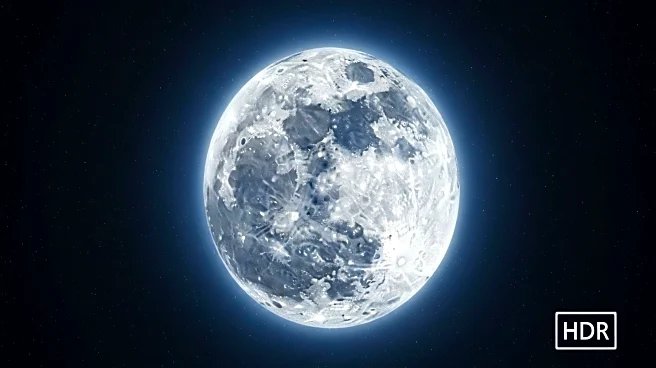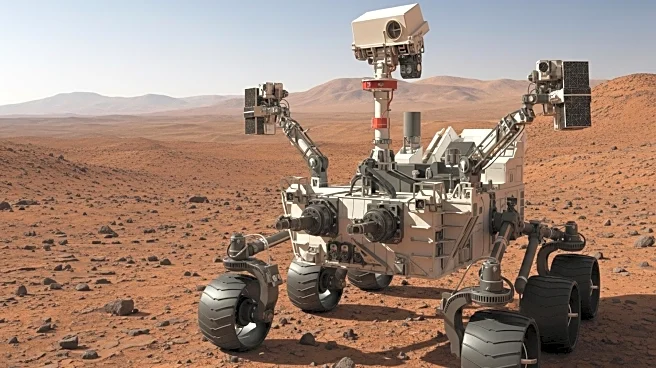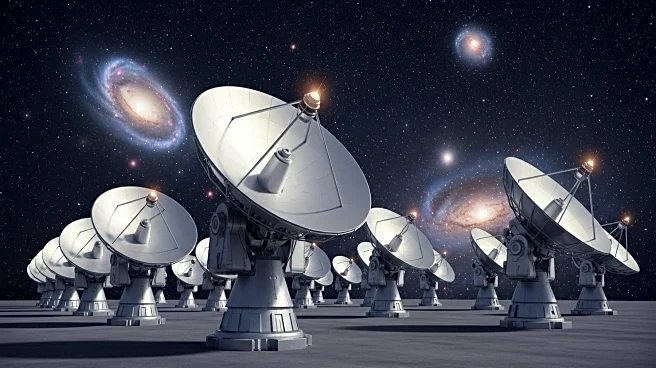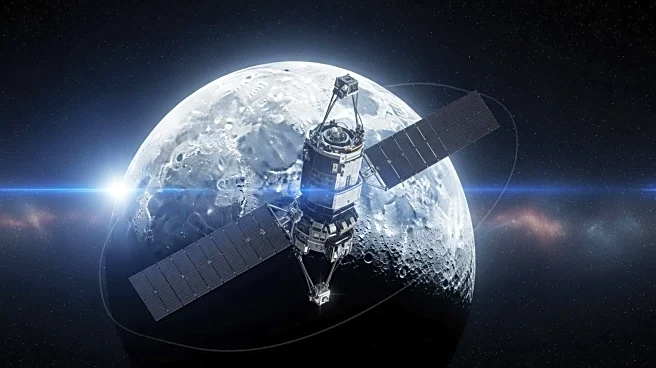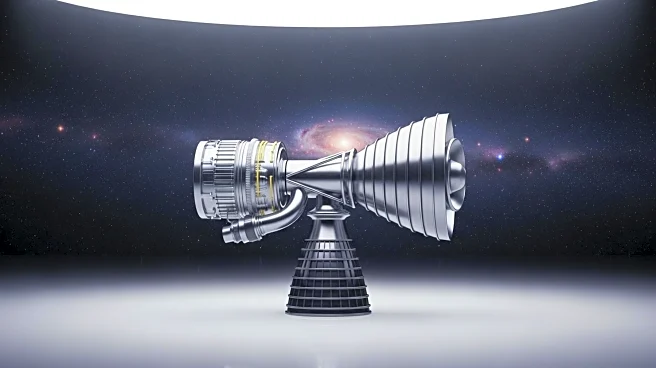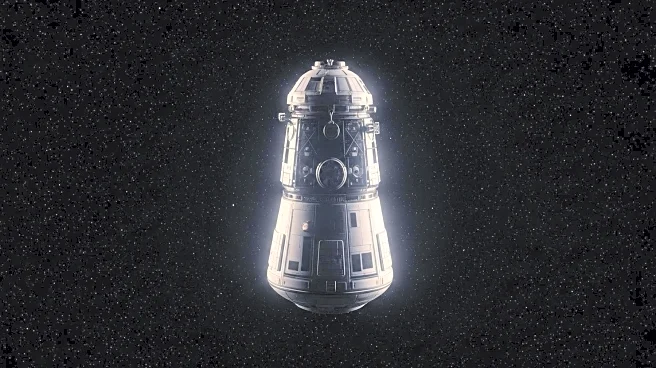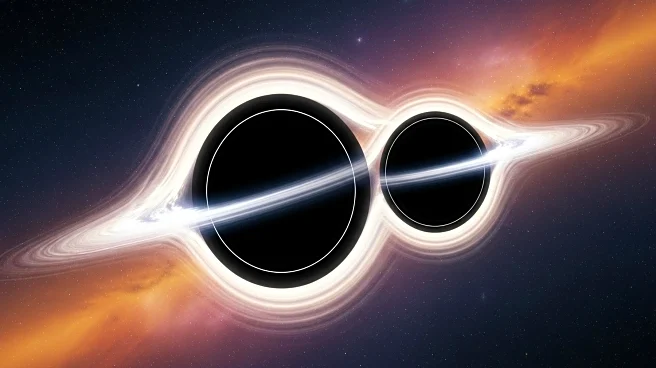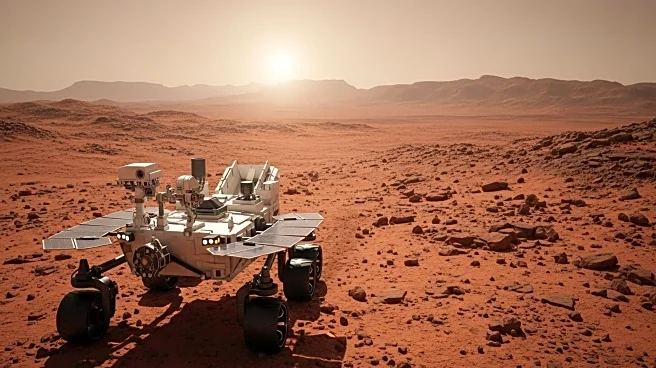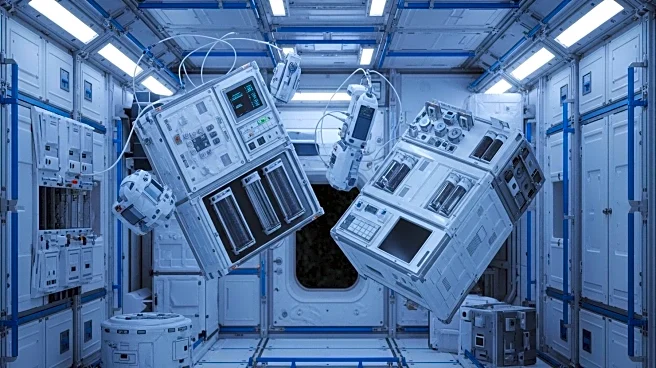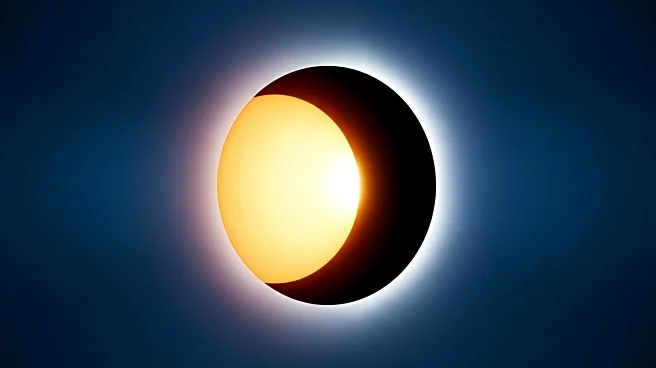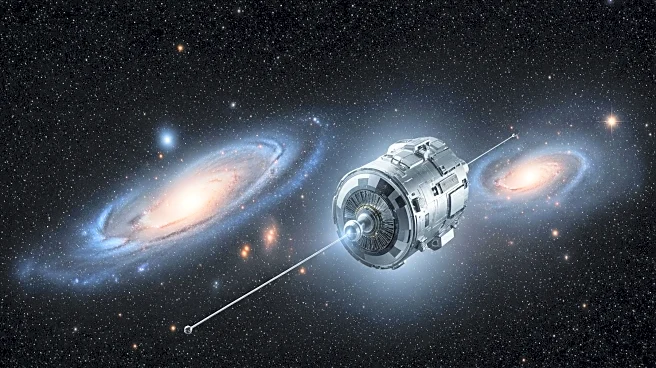What is the story about?
What's Happening?
Recent studies have confirmed the presence of water ice in craters near the lunar South Pole, a discovery that has been speculated since the 1960s. This finding was supported by data from multiple lunar missions, which showed light reflecting off the craters in a manner consistent with pure ice. The Indian Space Research Organization's Chandrayaan-3 mission, which successfully landed near the lunar South Pole, aims to further study this water. The presence of water on the Moon is believed to have originated from comet impacts or other celestial bodies containing trace amounts of water ice.
Why It's Important?
The confirmation of water on the Moon has significant implications for future lunar exploration and potential colonization. Water is a critical resource for sustaining human life and could be used to produce fuel for space missions, making the Moon a viable base for further space exploration. This discovery also enhances our understanding of the Moon's geological history and the solar system's evolution. The involvement of international space agencies, such as India's ISRO, underscores the collaborative nature of space exploration and the shared interest in utilizing lunar resources.
What's Next?
The discovery of water on the Moon is likely to accelerate plans for lunar exploration by various space agencies, including NASA, which has expressed interest in the lunar South Pole. Future missions may focus on extracting and utilizing lunar water, potentially leading to the establishment of a permanent human presence on the Moon. This could also spur advancements in space technology and international cooperation in space exploration efforts.
AI Generated Content
Do you find this article useful?
